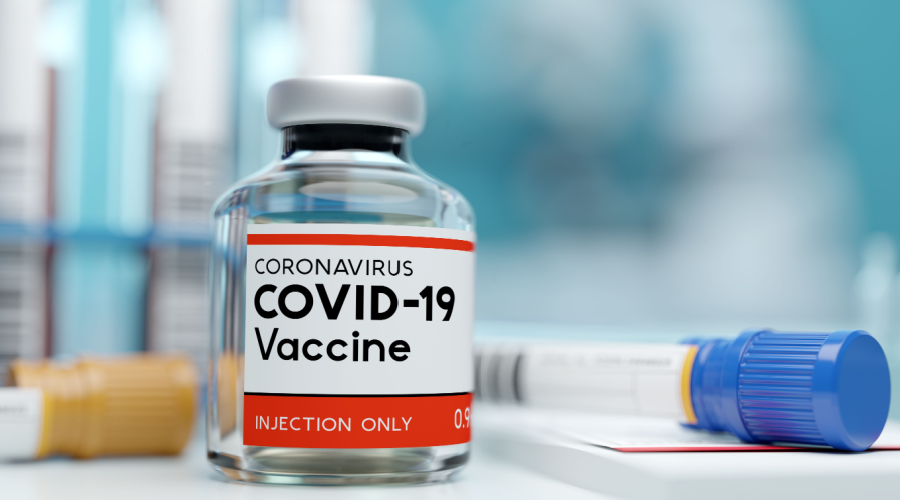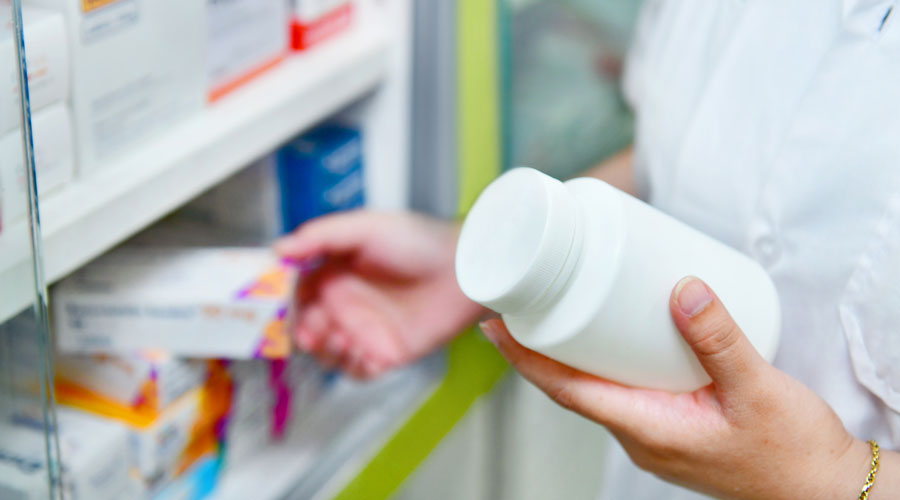When pharmacists Kevin and Brandi McCullough arrived at Evans Drug in 2006, the rural pharmacy had three computers and dispensed all of its pills the old-fashioned way: with a pair of human hands. Since purchasing the pharmacy in 2011, the McCulloughs upgraded to 20 computers and installed two fully automatic robots that handle 70 percent of its prescriptions.
Those robots—ScriptPro SP 200 and ScriptPro CRS 150—helped to nearly quadruple their business. “There was a limit to what we could do before,” Kevin said. “Anything above that we were going to increase risk of mistakes, time to fill. We can handle more growth now because of the robotics.”
For McCullough, the decision to bring robotics into the pharmacy was easy. “It was a quality of life thing,” he said. “I wanted to be able to come into my job each day and enjoy it, and not have the worry of, ‘What if we’re short on help?’ or ‘What if patients come in all at once?’”
The ScriptPro robots have helped McCullough fend off daily stresses. And, by adding automation, the pharmacy staff has had more opportunities to connect with patients on a human level. Because some of the more tedious work is now handled by robotics, pharmacists and technicians have more face time with patients, and the pharmacy has been able to expand into other areas like long-term care. “It’s allowed us to play a bigger role than just counting prescriptions,” McCullough explained.
Increasing volume and profits
Some pharmacists may flinch at the cost of adding robots to their space—the initial price tag can range from $150,000 to $200,000. But McCullough has never doubted his investment. “Each time we’ve added more automation, we’ve been able to increase prescription volume, and we’ve been able to grow,” he said.
Without the robots in place, McCullough suspects the pharmacy wouldn’t have been able to take on the volume that comes with new patients, and that they could have even lost some of their existing patients.
McCullough runs a total of four pharmacies, and each of them has at least one robot. One of the pharmacies has had a robot from day one, and he admitted, “It was kind of a learning experience for us. It was probably too soon.”
But for the other pharmacies, which already had a volume of around 4,000 prescriptions a month, the robots helped increase volume more quickly than could be expected with organic growth. “Walking into a store that has ScriptPro robotics and a store that doesn’t, the time savings and efficiencies are pretty apparent,” McCullough said.
How the robots work
The ScriptPro robots are easy to use. Once a technician types in a prescription, the robot takes over. It grabs a bottle, takes it to a location inside the robot, counts out the medicine, and then sends it out on a conveyer belt with a label on it.
“The one thing it doesn’t do is put a lid on it,” McCullough said. “That’s kind of nice, because it allows us to take that last step of verifying that the patient is getting the right medication.”
The robots at Evans Drug each contain 150 or 200 cells for medications, and they allow pharmacists and techs to focus on the prescriptions that have to be manually counted rather than spending time hand-counting everything. “For all the medications that are in the robot, it’s that much less medication that you’re grabbing, walking back and forth from the shelves, and counting,” McCullough said.
Personal touches
One of McCullough’s biggest concerns about adding robots was that they would take jobs away from human workers. The fear turned out to be unwarranted.
“We have never added a robot to a store and decreased staffing,” he said. “We add robots with the anticipation that it will increase the number of prescriptions coming in.”
Since the robots handle so much of the daily volume, they have changed how technicians are trained and utilized. Instead of starting technicians out at a filling station where they learn how to count and fill prescriptions, Evans Drug has them train on a computer for several weeks before having any direct patient interactions. McCullough explained, “When they do start having those face-to-face experiences, they’re already trained on the computer system and the robotics are taking care of a lot of the things the technician used to do, so the patient experience becomes better.”
Because robotics have led to improved customer experiences, McCullough has noticed that his staff is more motivated to help the pharmacy grow. “It’s not as stressful, so they are happy to say, ‘Hey, come on in, we want this extra business,’” he said. “It may be more work, but it doesn’t feel like more work because it’s done efficiently.”
Keeping errors at bay
The robots also minimize opportunity for errors. Every prescription has a scan verification and every label shows a picture of the medication, giving the patient the opportunity to verify. The technicians and pharmacists also do checks to ensure accuracy.
“If we get a warning that says something doesn’t match and we ignore it, that can be a place where issues pop up,” McCullough said. “It’s something as a pharmacist you always stress—that everything is being verified. But the scan verification creates a situation where that’s unlikely to happen.”
If the robots happen to go down—a rare occasion, as the robots have an average uptime of more than 99 percent—ScriptPro has the ability to connect to the robot remotely and fix it online. If they’re unable to fix the problem that way, they usually arrive at McCullough’s pharmacy within a day at the most.
During the downtime, the pharmacy will pull out the cell that holds medication from the robot and manually count medications. “It makes you appreciate the benefits of having the robot, that’s for sure!” McCullough said.
Formula for growth
Robots have proven so successful for Evans Drug that in the coming months they will add a third type of robot—one that does multi-dose packaging. “Once we get that in the mix, it will open us up to the next step for growth,” McCullough said.
Despite the large expense of adding automation to the pharmacy, McCullough said, “It brings peace of mind. If I come in on a Saturday and there’s only one or two technicians that can come in, I’m not worrying about our ability to get things done. You enjoy coming in each day just a little bit more.”
From the Magazine
This article was published in our quarterly print magazine, which covers relevant topics in greater depth featuring leading experts in the industry. Subscribe to receive the quarterly print issue in your mailbox. All registered independent pharmacies in the U.S. are eligible to receive a free subscription.
Read more articles from the September issue:
- Simple strategies guaranteed to boost pharmacy cash flow (+advanced formulas)
- Long-term care opens the door to long-term pharmacy profits
- How to find a premier secondary supplier
- Is it time for your pharmacy to downsize?
- Your pharmacy’s appearance matters more than you think
- How to protect patients and profits during shortages
An Independently Owned Organization Serving Independent Pharmacies
PBA Health is dedicated to helping independent pharmacies reach their full potential on the buy side of their business. The company is an independently owned pharmacy services organization based in Kansas City, Mo., that serves independent pharmacies with group purchasing services, expert contract negotiations, distribution services, and more.
PBA Health, an HDA member, operates its own VAWD-certified warehouse with more than 6,000 SKUs, including brands, generics, narcotics CII-CV, cold-storage products, and over-the-counter (OTC) products.
Want more pharmacy business tips and advice? Sign up for our e-newsletter.











